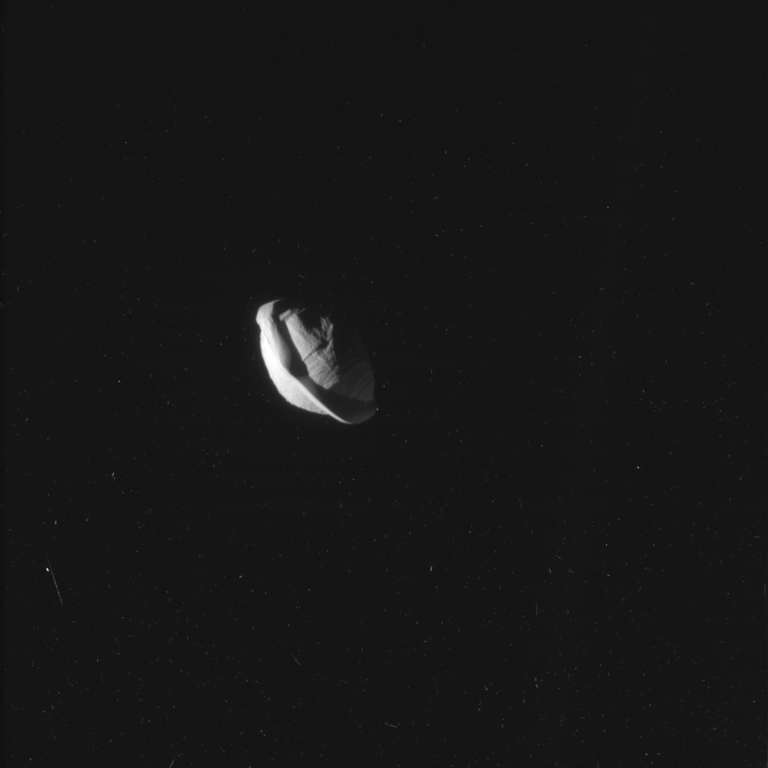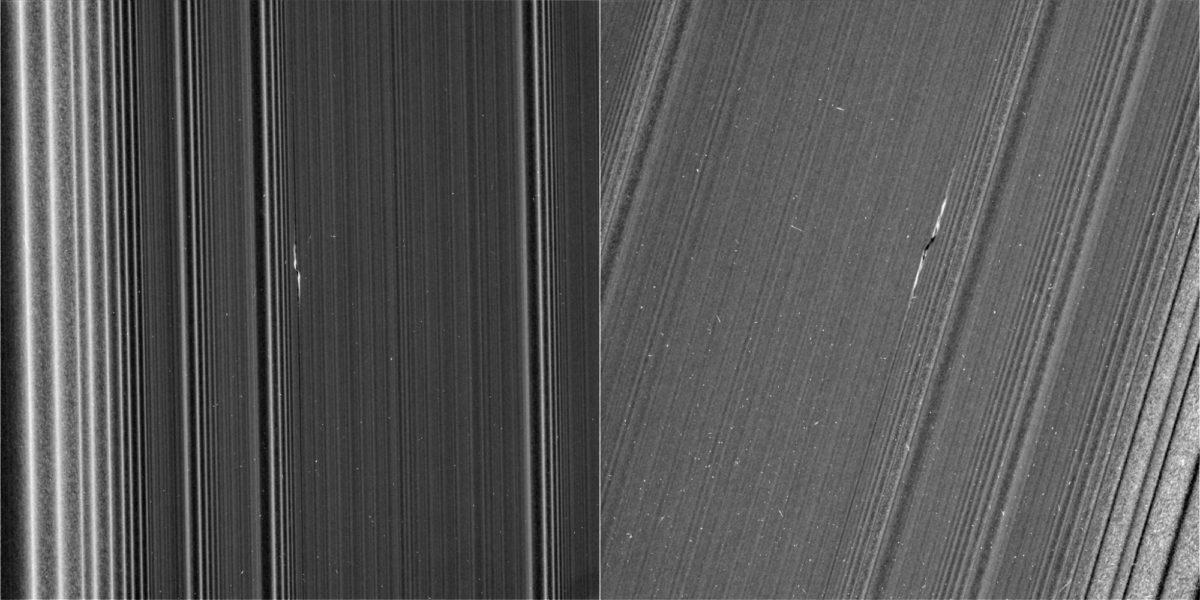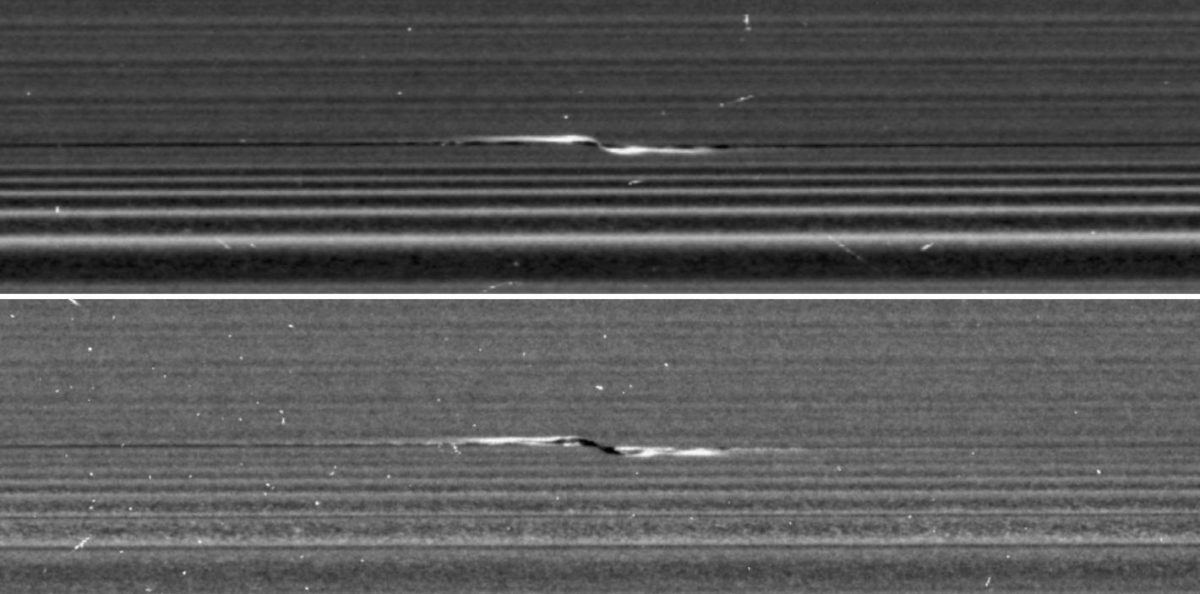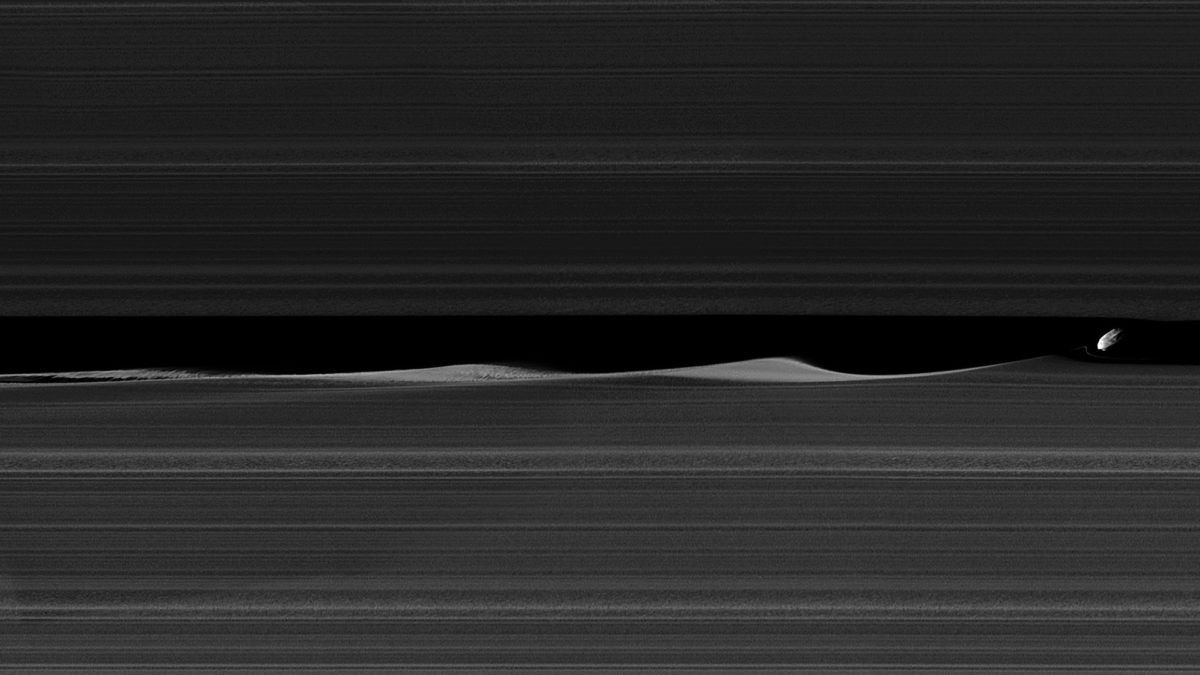Jason Davis • Mar 09, 2017
Cassini, with only a half-year to go at Saturn, just keeps dropping awesome images
The Cassini mission at Saturn ends in 6 months and 5 days.
On September 15, after 13 years in orbit, Cassini will plunge into Saturn's atmosphere, preventing it from accidentally colliding with the potentially habitable moons of Enceladus and Titan.
Right now, the spacecraft is in the midst of 20, ring-grazing orbits, after which it will maneuver itself into a path that will take it between the rings and the planet itself on April 22.
At the moment, Cassini's outer ring orbits are revealing some wild, high-resolution shots of some of Saturn's most enigmatic worlds. Most recently, this included new looks at 35-kilometer-wide Pan. On March 7, Cassini got its best view yet of the ravioli-shaped moon, which orbits inside the A ring's Encke gap.
How amazing is that? Scientists think the smooth equatorial bulge is ring material that has accreted around Pan's surface. Here's another shot, from 25 minutes later:

What else has Cassini been seeing? Quite a lot. Here's an incredible image that was captured last month of a "propeller" inside Saturn's A ring:

What you're seeing is a tiny moonlet inside the rings that have pried open the surrounding ring material by gravity. (The NASA Photojournal site explains this in more detail.)
Here's the same two images, aligned and cropped:

For a better idea of how Saturn's tiny worlds gravitationally perturb ring material, check out this mosaic of the moon Daphnis. Emily posted about this image back in January; this is a newer mosaic combining multiple shots:

Since earlier this year, I've been following the Twitter account @RawCassini, created by Kevin Gill. (I only recommend this if you use an app like TweetDeck to filter your feed; personally, I created a special "OMG Cassini" column just for this account.)
Here are a few more raw moon images that have recently caught my attention. Enjoy them while you can! In a mere six months, the Saturn system goes dark.
Support our core enterprises
Your support powers our mission to explore worlds, find life, and defend Earth. You make all the difference when you make a gift. Give today!
Donate

 Explore Worlds
Explore Worlds Find Life
Find Life Defend Earth
Defend Earth





